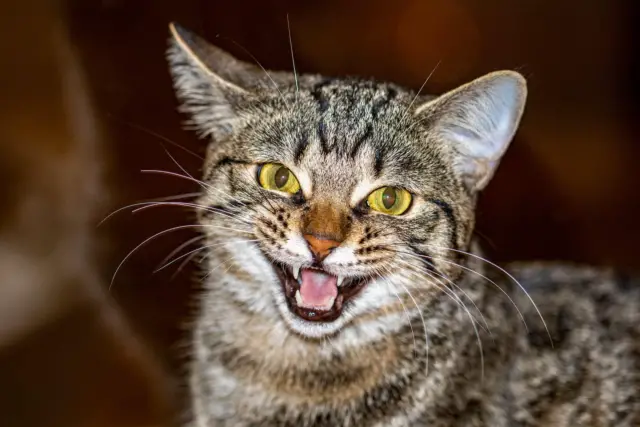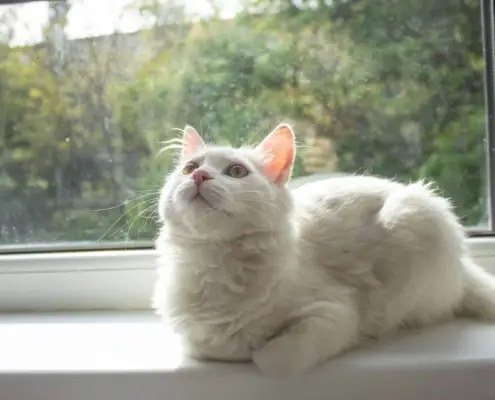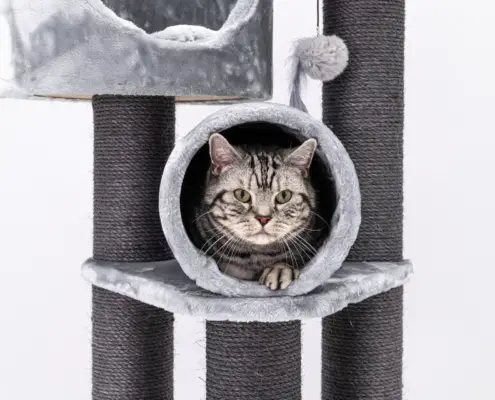
Cats come in all shapes and sizes, from tiny teacup cats that fit in the palm of your hand to majestic Maine Coons that can reach over 20 pounds. Understanding the different sizes of cats can help you choose the right pet for your lifestyle and preferences. In this article, we will explore the factors that determine a cat’s size, the various cat size categories, and highlight some notable breeds and their sizes.
Factors that determine a cat’s size
Several factors contribute to a cat’s size, including genetics, breed, and individual growth rate. Genetics play a significant role in determining a cat’s size as certain breeds are naturally larger or smaller than others. For example, the Maine Coon breed is known for its large size, while the Siamese breed tends to be smaller and more delicate.
The breed of the cat also influences its size. Breeds that have been selectively bred for specific traits, such as the Scottish Fold or the Sphynx, may have distinct size characteristics. Additionally, individual growth rate plays a role in determining a cat’s size. Some cats may experience a growth spurt during their first year, while others may continue to grow well into adulthood.
Different cat size categories
Cats can be categorized into different size groups based on their weight and body structure. These categories include tiny teacup cats, small and medium-sized cats, and large and extra-large cats.
Tiny Teacup cats
Tiny teacup cats are the smallest of the feline world, weighing around 2 to 4 pounds. These petite felines are often sought after for their adorable size and delicate features. However, it’s important to note that breeding for extremely small sizes can lead to health issues in these cats. Responsible breeders prioritize the health and well-being of their cats over extreme size.
Small and medium-sized cats
Small and medium-sized cats typically weigh between 5 and 10 pounds. These cats are popular among pet owners due to their manageable size and playful nature. Breeds such as the Abyssinian, American Shorthair, and Ragdoll fall into this size category. They are generally well-suited for both apartment living and larger households.
Large and extra-large cats
Large and extra-large cats can weigh anywhere from 10 to 25 pounds or more. These impressive felines command attention with their size and often have a gentle and calm temperament. The Maine Coon, Norwegian Forest Cat, and Bengal are examples of larger cat breeds. They require more space and may have specific dietary needs due to their size.
Majestic Maine Coons
Among the large and extra-large cat breeds, the Maine Coon stands out for its majestic size and impressive appearance. Maine Coons can weigh up to 20 pounds or more, making them one of the largest domestic cat breeds. Known for their friendly and gentle nature, Maine Coons are often referred to as “gentle giants.” They have a thick, shaggy coat and tufted ears, adding to their regal and rugged charm. If you’re looking for a cat that will make a statement, the Maine Coon is an excellent choice.
Other notable cat breeds and their sizes
While the Maine Coon is certainly an impressive breed, there are many other notable cat breeds with unique sizes. For example, the Munchkin breed is known for its short legs, while the Persian breed is famous for its long, luxurious coat. The Siamese breed is elegant and sleek, with a slender and delicate build. Each breed has its own distinct characteristics and size variations, allowing you to find the perfect cat that matches your preferences.
How to choose the right-sized cat for your lifestyle
When considering a cat’s size, it’s essential to take your lifestyle and living situation into account. If you live in a small apartment, a tiny teacup or small to medium-sized cat may be a better fit. These cats require less space and are generally more adaptable to smaller living environments. On the other hand, if you have ample space and are looking for a cat that will make a statement, a larger breed like the Maine Coon may be the perfect addition to your household.
Additionally, consider your activity level and the amount of time you can dedicate to your cat’s exercise and play. Some larger breeds, such as the Bengal, have high energy levels and require more stimulation and interaction. Smaller breeds may be content with less physical activity. By understanding your lifestyle and the needs of different cat sizes, you can make an informed decision and find a cat that will thrive in your care.
Appreciating the diversity in cat sizes
In conclusion, understanding cat sizes is key to finding the right companion for your home. From tiny teacup cats to majestic Maine Coons, the feline world offers a wide variety of sizes and breeds to choose from. Consider factors such as genetics, breed, and individual growth rate when determining a cat’s size. Whether you prefer a small and playful cat or a large and regal one, there is a perfect feline companion out there for everyone. Embrace the diversity in cat sizes and find the cat that will bring joy, love, and companionship to your life.
If you’re ready to welcome a new furry friend into your home, visit your local animal shelters or reputable breeders to find the cat of your dreams. Remember to prioritize the health and well-being of the cat over extreme size and always choose a responsible source.
If you enjoyed my article, I would appreciate you sharing it with your network.

Sima Ndlebe
Sima writes for CatBuzz. He is interested in Cats, Health and Fitness, and Entrepreneurship.
Published: 13 October 2023




